What We Can Learn From Birds Technology
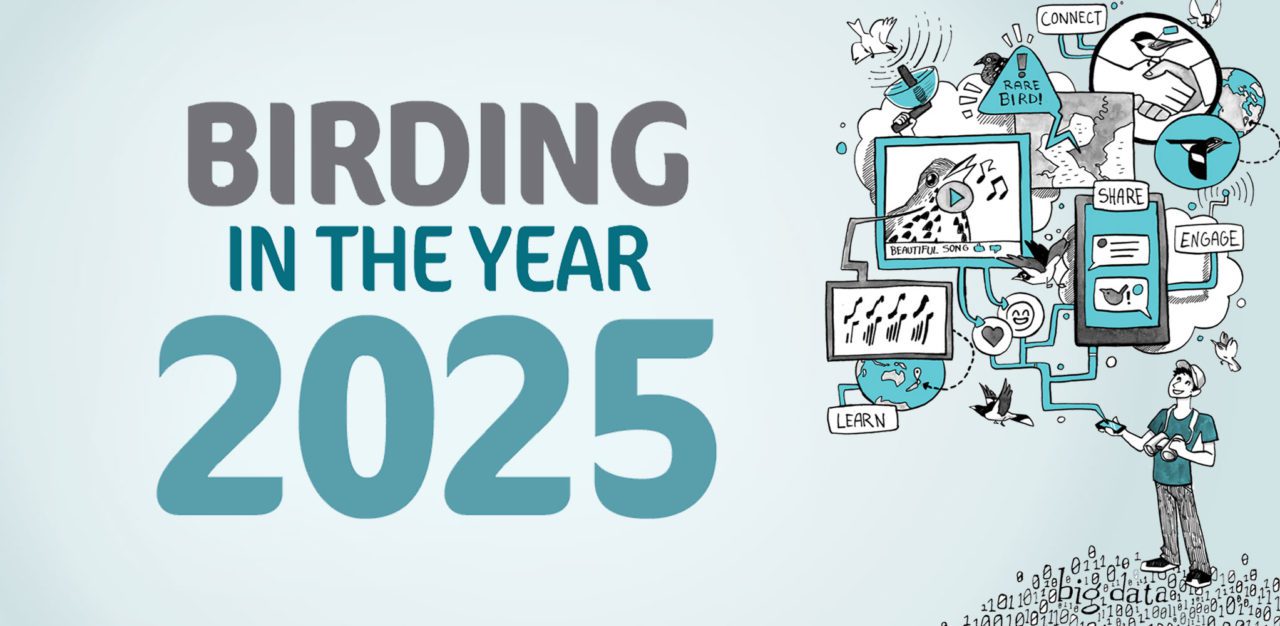
Illustration by Virginia Greene.
From the Winter 2020 upshot ofLiving Bird mag. Subscribe at present.
At the dawn of the 2020s, a calculator-scientific discipline pioneer and an eBird inventor took a road trip through Silicon Valley to explore the future of birding—and see what new Birding Tech might be out within the next 5 years.
The first ii decades of the 21st century were marked by rapidly advancing technology that radically changed people'south everyday experiences, including the birding feel.
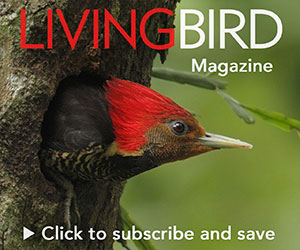
That clunky, hard-copy field guide for bird identification is now a field guide app on your phone with an array of audio files, video clips, and photo galleries. Or, you tin simply ask your phone what that bird is—artificial intelligence has advanced to the point where the Cornell Lab of Ornithology'due south Merlin app tin identify bird photos for you.
Meanwhile, the guessing game of when birds on migration might arrive is a thing of the by. The Cornell Lab'due south BirdCast project at present scans the night skies via the nation'southward Nexrad radar network and conjures up localized bird-migration forecasts via a magic mix of automobile learning, cloud computing, and big-information analytics.
None of this was imaginable in the year 2010. Which got us to thinking…what unimaginable things are on the horizon equally we roar into the 2020s?
To get a peek, nosotros embarked on a road trip into Silicon Valley, where the future is being invented now, to ask tech innovators what birding might be like past the end of this decade. We talked to two dozen Silicon Valley insiders, including research and innovation executives at Google, IBM, and Facebook; three Stanford computer scientists; and the gaming pioneer who helped bring the world Candy Crush.
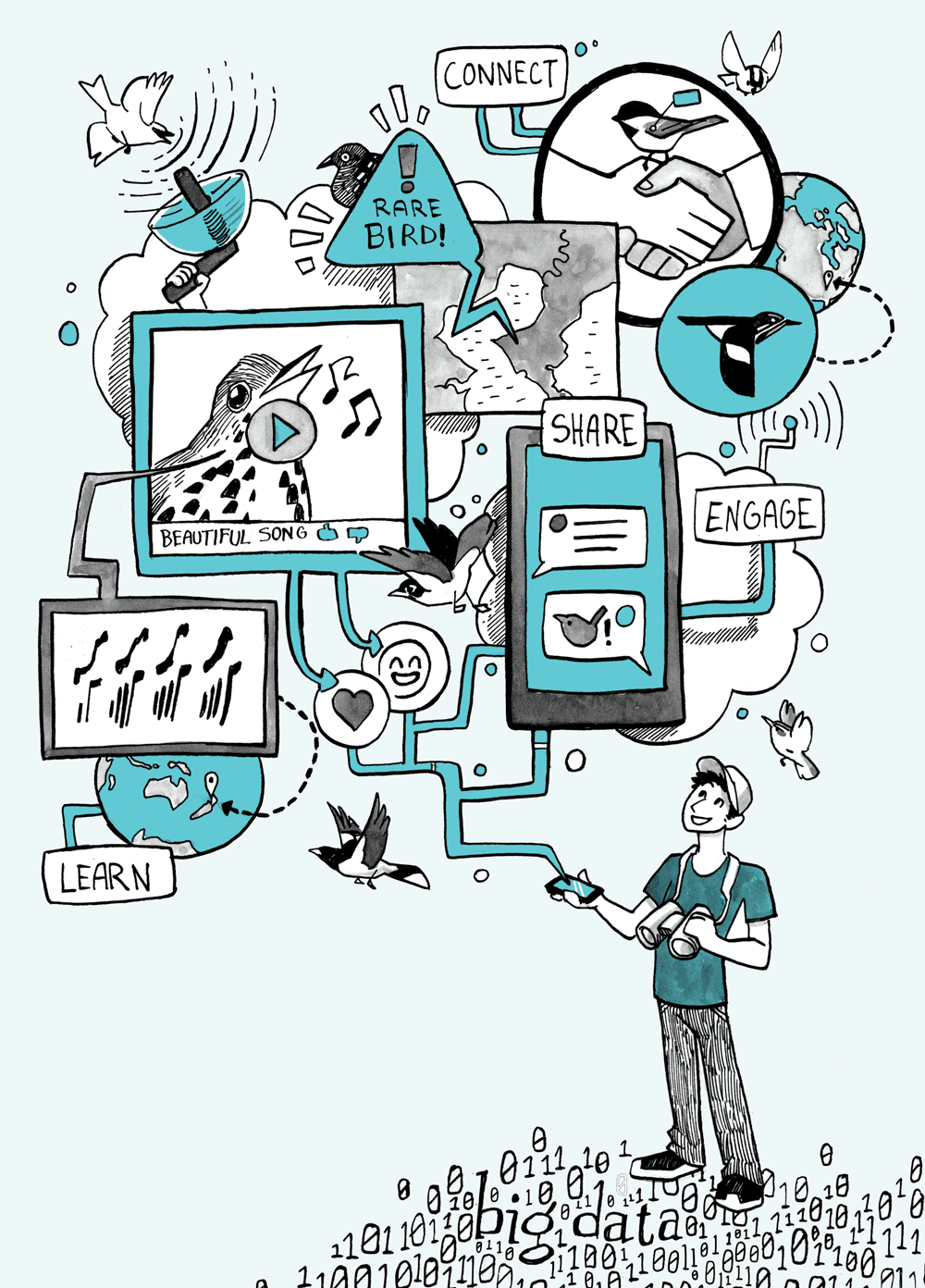
Spoiler warning—we quickly discovered that no one in Silicon Valley thinks they tin can see x years out. "Anything more than around five years, you're only guessing," they said. OK then, change of plans—what volition birding be like by the year 2025?
The answers to that question already exist. Because as scientific discipline fiction author William Gibson once said: "The future is already here, it'due south just non evenly distributed." In other words, whatever tech that volition become widely adopted within five years has already been invented today. It just hasn't hit the mainstream all the same.
In our 24 interviews, we heard predictions that the smartphone is well on its way to becoming a miniaturized supercomputer. Moore's Constabulary (named subsequently semiconductor pioneer and erstwhile Intel CEO Gordon Moore) states that tech devices with integrated circuits volition continue to double in computing power every two years. While nearly heavy-duty calculating is done via the cloud today, anytime soon smartphones will be capable of high-functioning computing all by themselves. We also heard loud and articulate that social media and gaming volition be even more dominant forces in how people interact, with each other and with organizations.
These and other tech drivers could reshape the birding experience for birders who use their smartphone. Sorry, we're probably not headed into a Jetsons Age with personalized rocket packs for self-guided, high-summit airborne birding inside the next five years. But your smart binoculars may have a digital readout that IDs a bird for you. Your smart bird feeder might upload its own bird checklist. Your eBird checklists could feed a real-time conservation-monitoring algorithm that dims the lights in big cities—and saves more migrating birds.
By the Year 2025, Birding Could exist the Latest Addictive Gaming Craze
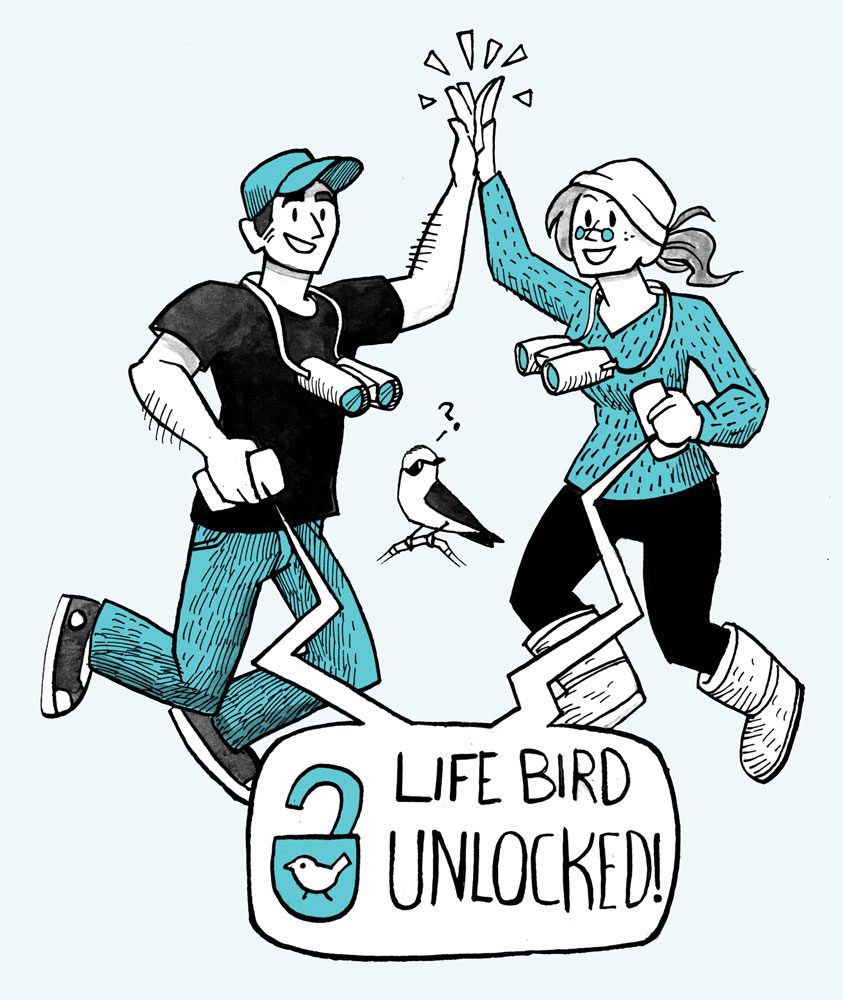
Gaming has gone fashion across Playstation and Xbox. Anybody with the Starbucks app could now be a gamer who races out over a tiffin break to chase stars that add up to real-world discounts on lattes. The world of gaming is creeping into our everyday lives, and gaming motivations are driving social behavior. What if gaming came to birding?
In the future, in that location could be gaming rewards for the digital birder, too. Whereas today there are Height 100 eBird leaderboards for every land, the eBird motivations of the 2020s could be more personalized.
Games to Make You a Improve Birder
Many foreign-linguistic communication learning apps such as Duolingo already offer incentives and status symbols as encouragements to advance to higher levels. What if eBird offered rewards for skills and accomplishments—a bluecoat for a lifer bird, or an encouraging annotation for the start seasonal sighting of a migratory species? ("Way to go, that'south your offset Yellowish-rumped Warbler this spring!") FitBit tells users when to get up and movement around to meet their goals for steps. What if eBird gave you a gentle nudge to get on a birding streak and upload checklists x days in a row?
Mayhap eBirders could even personalize the goals they desire to achieve, from mission-oriented conservation birding (targeting IUCN Carmine Listing vulnerable birds) to more than esoteric pursuits, such every bit birding for phylogenetic multifariousness (looking for a Wrentit along the West Declension, the only fellow member of its family unit in the entire Western Hemisphere). More refined metrics for rewarding a birder's proficiency and effort could encourage masses of birders to up their birding game and upload more data.
Games to Organize Competitive Birding
How nigh a friendly game of birding? Fantasy football game uses tech to bring friends together in computer-generated leagues that score information based on existent-world results. With a picayune co-opting of gamesmanship from the world of fantasy sports, merged into the digital mechanisms for recording and tracking bird counts, the tech could be developed that would enable birders to compete in leagues organized online—simply based on the birds that players really see outdoors. (An early, unmarried-role player version of fantasy birding already exists.)
By the year 2025, birding could become a social-media motility
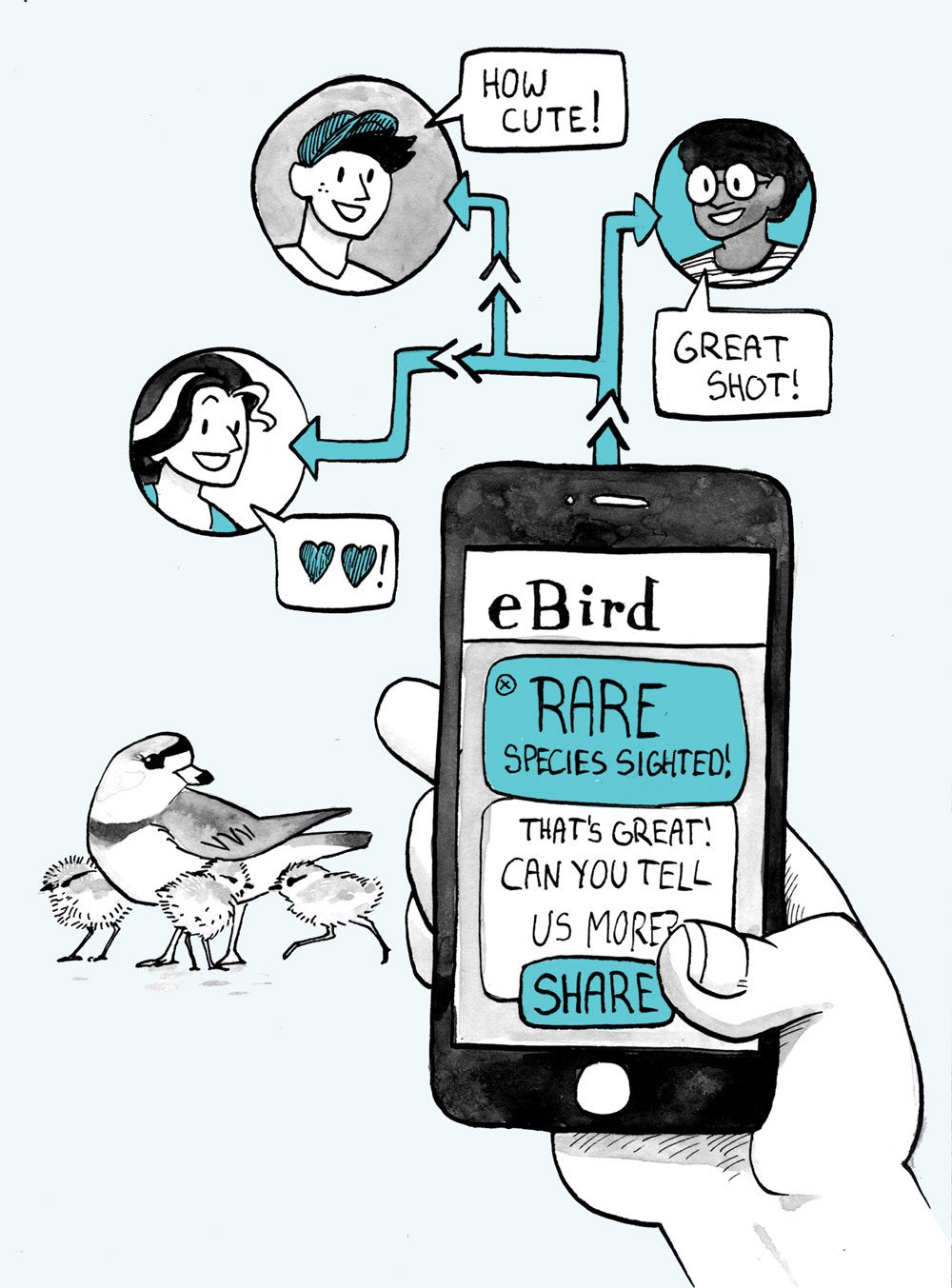
Tech diffusion is a term for the global spread of engineering. Smartphones accept spread far and wide and are the primary, and frequently but, way for people to admission the internet in much of Asia, Africa, and Republic of india. And many apps can be customized for local languages and dialects. The eBird mobile app is now available in 27 languages, and Merlin covers more than 100 countries around the world.
At the same fourth dimension, about half of the world's vii-billion-plus people are on social media—with more than 2 billion users on Facebook, and more than than a billion each on YouTube, Instagram, and WhatsApp.
Imagine a earth where the global strength of social media and the burgeoning network of eBird and Merlin users are integrated. It'south a world where Birding Tech connects birders in a social media–sharing experience, and where scientists can connect with birders to make special requests for the data they need.
eBird Becomes a Sharing App
The eBird checklist of the hereafter could be a lot more than one person's bird sightings. What if y'all had the selection to make eBird a virtual venue for sharing successes and aspirations with fellow birders, cheering others on and comparing notes for tomorrow'southward birding adventures? Birders could coordinate in real time in the field, sharing rare bird alerts when and where birders can make immediate utilise of them.
A social media–enabled eBird could facilitate team birding, in which birders ring together (in endeavor, if not physically) to broadly encompass an area and record their own birding blitzes. Global Big Day (which recruited nearly 20,000 birders in a unmarried, global birding attempt terminal October) could be every 24-hour interval…birders working together, encouraging and sharing experiences.
eBird Offers a Most-Wanted List for Scientific Research
The beauty of eBird is that it works for birders and scientists akin—a handy digital checklisting tool for the old, a large-data treasury about birds for the latter. Only what if eBird made it possible for scientists to brand special requests, soliciting more than data about rare sightings or species that are the subjects of in-progress inquiry? What if eBird could talk back to users?
If an eBird checklist contained a species of particular research interest, perchance the eBird app could solicit the user to tell scientists more. (What was your bird doing? What did the surrounding habitat wait like?) Or upon opening up their eBird app in the morning time, users could be greeted with a listing of "GoFindMe" birds—a well-nigh-wanted list of species needed to support current scientific studies. With such a mechanism, researchers and wild fauna agencies could straight birding try toward the needs of science and conservation.
By the year 2025, AR* and AI** will combine for a more powerful birding feel
*augmented reality **artificial intelligence
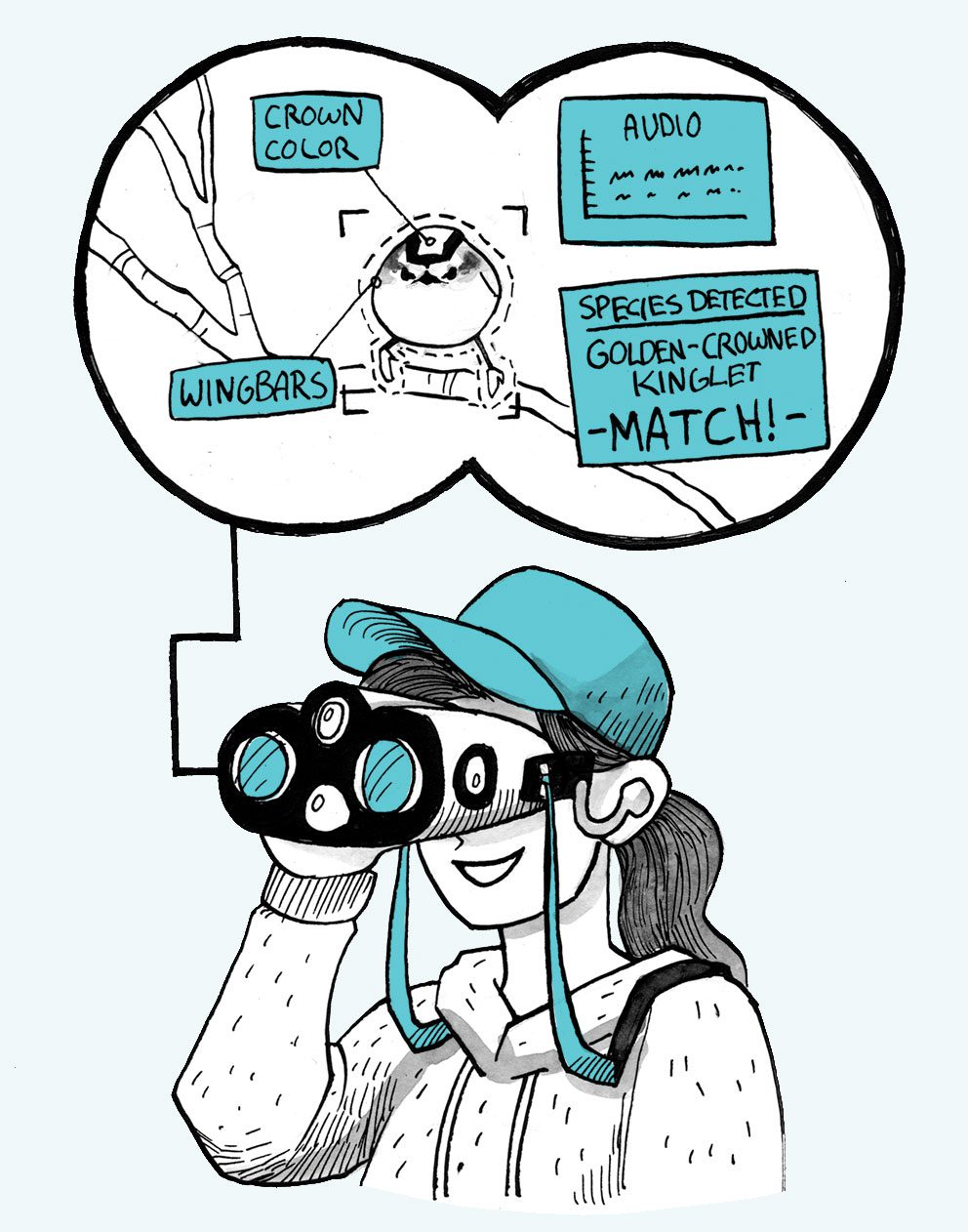
Birding in the Year 2025: AR and AI. Illustration by Virginia Greene.
Augmented reality is dissimilar from virtual reality. VR is the Oculus goggles that transport you to an alternating, digital world (similar a zombie-infested wasteland in a VR video game). AR is Google Drinking glass—you lot still see the actual world around y'all, but your view is augmented with data readouts and digital displays.
Google Glass didn't catch fire in its commencement iteration, merely it didn't go away. The tech just needs a scrap more fourth dimension to mature (and the glasses need to be a bit less goofy). Silicon Valley is hard at work on developing AR that adds helpful information displays to your view of the real world, fueled by artificial intelligence technology that tin translate what yous're seeing. Consider the Google Translate app's viewfinder, which tin morph the image of a Castilian-language restaurant carte du jour into English. At present imagine how AR could be applied to a birder's-eye view.
Smart Binoculars That Suggest a Bird ID
Eyes with AI-powered bird ID via a smartphone connexion are coming soon (come across more about the Swarovski's Digital Guide in sidebar). As a next step, this tech could be infused straight into binoculars. Imagine locating a bird in your binos, and then seeing a list of species names pop up beside your bird in the viewfinder based on the bird'due south size, shape, color, and recent eBird sightings in the area.
AI-Powered Apps That Transform Your Smartphone Into a Birding Coach
With bogus intelligence tied to a user'southward life list and GPS coordinates on their eBird app, a smartphone could before long be a handheld birding guru. Heading out to bird the fall migration on a mid-autumn morning? Your smartphone could send yous a button notification with a primer for IDing disruptive fall warblers, customized for species seen recently near you on eBird. Or amend yet, you may be able to slip your smartphone into "bird guide" style—imagine if Merlin could human action like Amazon's Alexa and autonomously listen for and interpret ambience sounds, picking up bird calls and telling the user what species the app is hearing.
For vacationing birders, the Merlin app can already generate a list of the bird species that you're mostly likely to see afterwards you footstep off the airplane. In the future, Merlin might go a step farther by offering y'all customized species ID tutorials, audio birdsong quizzes, and recommendations on where to become to find new life-list birds in your vacation spot.
AI-powered Birding Tech for the smartphone could also lessen the learning curve for beginning birders. Traditionally, getting started in birding meant finding a mentor to teach the keys of bird ID. But a merger of AI and online education could pull that mentoring process into an app that uses tech to brand new birders successful on their own, without the constraints of finding a more experienced birder or hiring a guide.
By the twelvemonth 2025, smart devices could identify birds on their own
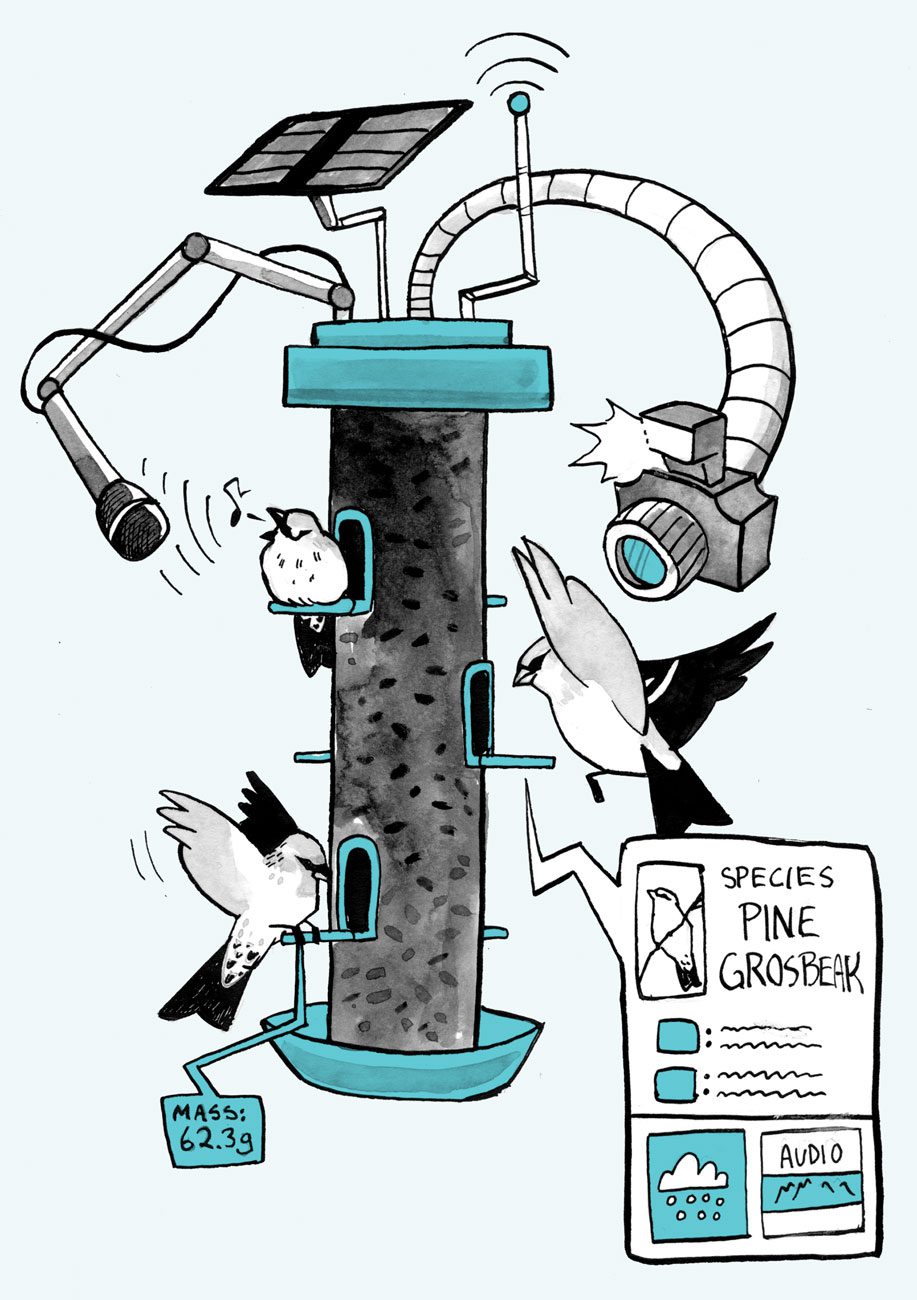
And not just place birds, but upload their own bird checklists—and provide complete environmental reporting on air quality, climate tracking, and more.
Birds are widely touted as indicator species, barometers of the health of our environs. If loons are seen on a lake, the water is presumably clean and prey fish populations are likely to be healthy.
Birders, and then, human activity as an ecology monitoring network by reporting checklists on the presence and absence of birds—data that can tell scientists something nigh the environmental conditions in the places where the birds were seen.
Some other pop axiom in Silicon Valley is Metcalfe's Law, named after Robert Metcalfe, a visionary computer engineer who was one of the pioneers of creating the internet in the 1970s. Metcalfe posited that the value of a network increases with the square of its participants. With more 500,000 eBird users spread across every nation in the world, the eBird data-reporting network is primed to become the biggest, and therefore almost valuable, environmental monitoring network (if it isn't already).
At the same time, technologies are rapidly advancing in other areas of ecology monitoring—particularly in shrinking the monitoring tech. Air-quality monitoring devices that tin can measure particulates down to 2.5 micrometers in diameter (small plenty to exist viewable only by an electron microscope) are at present available in handheld models. Cornell University experiments with ChipSat engineering are going fifty-fifty smaller, using thumbnail-sized sensor chips embedded in collars fitted around the necks of cows to measure air quality in dairy barns on upstate New York farms.
The same kinds of innovations in hardware technology connected to the eBird network could launch another era of rapid expansion for eBird deployment, with smart devices monitoring birds apart via artificial intelligence—and ChipSat-like sensors enabling an all-in-one ecology monitoring device that captures data on birds, air, climate, and more.
Smart Bird Feeders Could Turn the Backyard Feeder Into a Data-Monitoring Station
Smart refrigerators tin await inside your fridge, encounter what ingredients you have for dinner, and recommend a recipe. Smart weather condition stations are now tracking rainfall, UV levels, air force per unit area, humidity, wind speeds, and even generating hyper-localized weather forecasts out of a single home's lawn.
Are we that far away from the era of the "smart bird feeder"?
The following technologies already be: remote digital cameras that apart capture photos, continuous audio-recording devices that capture almost every sound within several hundred meters, and AI software that can autonomously place and categorize visual and sound data.
Put all that tech into a backyard feeder, and the smart bird feeder of the futurity might be able to tell you which bird species ate your bird seed today, and which nocturnal migratory birds were heard flying over your house last night.
Connect that smart bird feeder to your habitation's Wi-Fi network, and your feeder full of sunflower seeds is at present empowered to upload its ain eBird checklists—or text you an alert when a new species shows up.
Integrate the other tech that'due south already in today's smart lawn weather stations, and the information flow from a smart bird feeder could go beyond reporting on birds to include air quality (monitoring smog or wildfire fume) and climate tracking.
Robo-Birders Could Roll Out To Autonomously Survey Birds Beyond The Entire World
The same smart bird-feeder tech of the time to come could be deployed into a drone or other mobile device.
Such a machine (call it a "robo-birder") could observe (visually or via audio) more species than ever possible past humans conducting bird surveys. It could gather other ambient environmental information too, such as air quality or climate data. And it could go anywhere—into the about remote or least hospitable places on Earth.
The Australian bush country, the African Sahara—many of the globe's least-birded areas could exist within the reach of a roving robo-birder that could upload information into the eBird network.
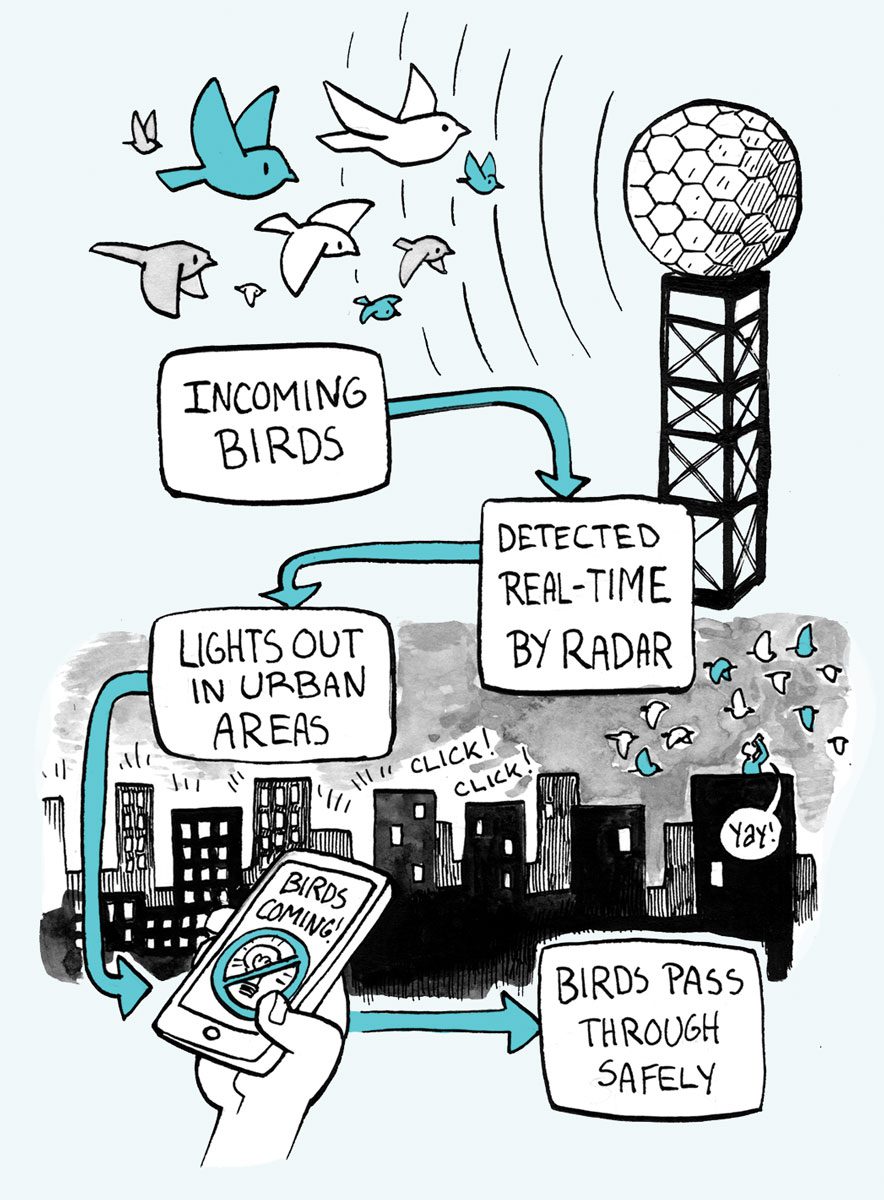
Past the year 2025, birding could be a force for rapid-response information reporting and existent-fourth dimension conservation
And so far nosotros've discussed the possibilities for engineering to improve the experience for birders and optimize the information menses for scientists engaged in conservation.
Simply what if tech could directly do good birds by speeding upward the decision-making procedure in conservation?
"Governments do non piece of work at Moore'due south Law's speed," said ane of the Silicon Valley sages we interviewed. Only engineering science does.
Advances in the real-time aggregation and analysis of big data nigh bird sightings—and the delivery of that data stream directly to government with the ability to brand conservation decisions–could fast-track the process from seeing birds to saving birds.
Birder-Powered Reporting Could Dim the Lights in Big Cities on a Large Migration Night
Building operators in Houston and Pittsburgh are already monitoring BirdCast forecasts for evenings of heavy overall bird migration, when lights should be dimmed to reduce building collision risks. The next step is to refine that bird migration-information reporting further, perchance using eBird-powered algorithms to detect when smaller but significant flocks of particular species are passing through an urban area—such as the sparrows, warblers, and thrushes that are most susceptible to building strikes. This standoff gamble–mitigation model could too exist applied in other areas, such as powering down current of air turbines on high-migration nights.
The Time to come of Birding Tech Depends on Birders and Data
Will any of these Birding Tech possibilities become reality past 2025…or always? Merely fourth dimension will tell. But the predictions we offer largely depend not on Silicon Valley, only on birders.
Specifically, they depend on the data that birders are willing to share. It took millions of eBird checklists to empower the AI tech that enables Merlin to identify a bird anywhere in the Us. It will take many millions more citizen-science contributions to go on advancing birding engineering.
Nosotros presented y'all with some possibilities for the Birding Tech of the time to come. You, the birder, tin can assist make that future a reality.
Virtually the Authors:
Peter Hart, a Silicon Valley artificial intelligence and robotics pioneer, serves on the boards of the Santa Clara Valley Audubon Club and the Cornell Lab of Ornithology.
Steve Kelling has led the evolution of eBird since its inception and is codirector of Avian Population Studies at the Cornell Lab.
Cornell Lab project leaders Jessie Barry (Merlin), Brian Sullivan (Birds of the World), and Chris Wood (eBird) have been involved in developing eBird and associated applications since the early 2000s.
Source: https://www.allaboutbirds.org/news/birding-with-technology-in-the-year-2025-our-predictions/
Posted by: sandbergmudis1966.blogspot.com


0 Response to "What We Can Learn From Birds Technology"
Post a Comment